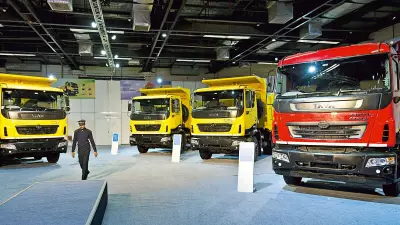
The Indian government is formulating a strategic response to the growing dominance of Chinese machinery in its multi-billion dollar construction equipment sector. In a significant move to bolster domestic manufacturing, the Ministry of Heavy Industries (MHI) is actively evaluating the imposition of a safeguard duty on heavy cranes and crawlers, alongside designing a sales-linked incentive scheme for local producers.
Tackling the Import Surge
This policy push comes at a critical time when India's $8.55 billion construction equipment market continues to rely heavily on imports, particularly from China. According to officials familiar with the development, the dependence underscores persistent challenges such as cost disadvantages, supply chain gaps, and limited domestic scale. Chinese imports now account for well over 20% of the market, offering cheaper alternatives that often lead contractors to prioritize immediate cost savings over long-term quality and durability, as noted by Santhosh Kumar, Vice Chairman of ANAROCK Group.
Dual-Pronged Policy Approach
The government's plan involves two key components. Firstly, MHI is assessing a proposal for safeguard duties on cranes and crawlers with a capacity above 70 tonnes. This process, once initiated by the line ministry, will proceed to the Directorate General of Trade Remedies (DGTR) for a formal investigation to determine if domestic industry is being harmed by these imports.
In parallel, the ministry is crafting a sales-based incentive scheme to encourage the local production of both complete equipment and commonly imported components. The ministry began working on this scheme in August and has already engaged with industry stakeholders regarding a revenue-based incentive model.
A Market Poised for Growth
The urgency for these measures is amplified by India's booming construction and infrastructure landscape. The country's construction market is currently valued at $0.74 trillion in 2025 and is projected to expand to $1.03 trillion by 2030. This growth is fueled by massive infrastructure projects like Bharatmala highways and railways, which constitute over 42% of demand, and government initiatives such as the National Infrastructure Pipeline and PM Gati Shakti.
Supporting data reveals a robust uptick in related sectors: housing sales value in top cities is expected to rise 19% in FY26, new commercial office project completion jumped 15% in the first nine months of 2025, and retail space deployment saw a staggering 155% increase in the first half of 2025.
While the domestic market saw modest growth of 2.7% in FY25, the industry's exports surged by a robust 10%, reinforcing India's position as the world's third-largest construction equipment market. However, industry bodies like the Indian Construction Equipment Manufacturers' Association (ICEMA) emphasize that continued policy support is crucial to sustain momentum, boost domestic demand, and resolve supply chain issues.
Experts highlight that mining and heavy engineering are likely to be high-demand areas requiring more advanced domestic production capacities. Key domestic players, including JCB India, Action Construction Equipment, Escorts Kubota, and Ajax Engineering, are poised to benefit from these potential policy shifts as India seeks to reclaim its market from foreign dominance.





